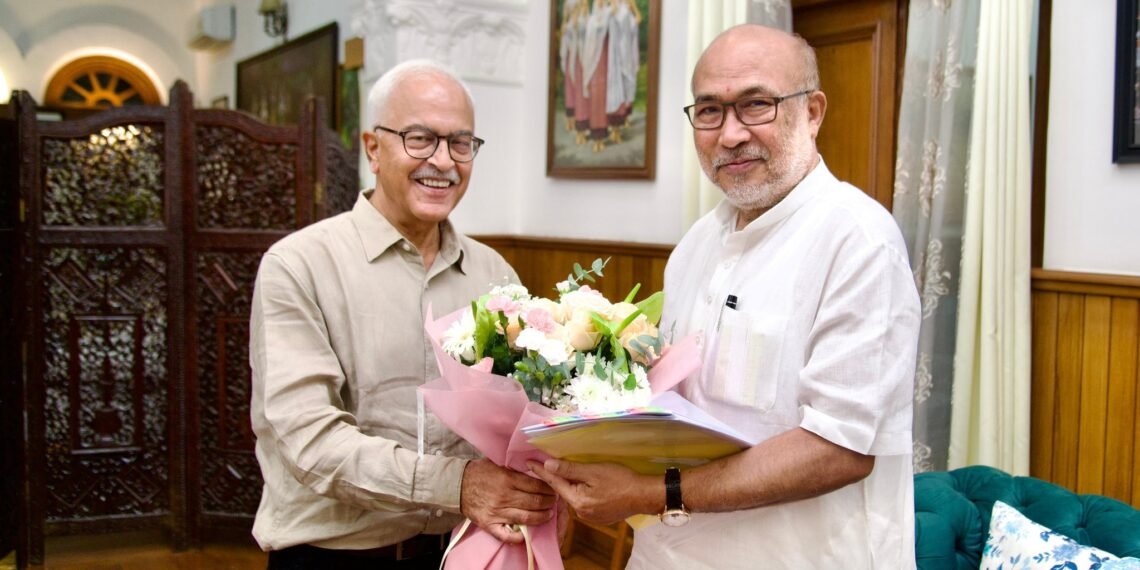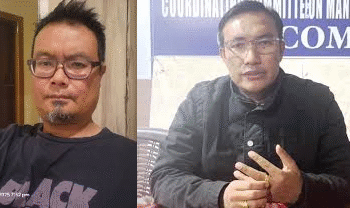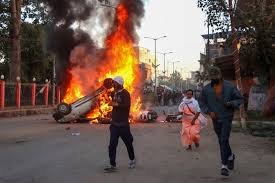Contradictions Emerge: Former CM Biren Singh once downplayed illegal immigration. Now, despite sweeping claims, his memorandum confirms far fewer cases than alleged—raising questions about political motives.
BY PC Bureau
Despite former Chief Minister N. Biren Singh’s forceful advocacy for a renewed crackdown on illegal immigration in his recent memorandum to Governor Ajay Kumar Bhalla, serious questions arise about the internal consistency of his claims—especially regarding the scale of undocumented migration and its supposed concentration among the Kuki-Zo population.
According to the 2011 Census, the Kuki-Zo tribal population in Manipur stood at approximately 500,000. By conservative estimates, this figure has grown significantly in the 14 years since, in line with national and regional trends. Yet Singh’s memorandum identifies just 5,457 illegal immigrants ( it’s Biren Singh”s claim that will need to be confirmed through legal process) in the state between 2017 and 2025—a number that amounts to roughly 1% of the 2011 Kuki-Zo population, and likely well below 1% based on current population figures.
READ: US Ends Routine Child, Pregnant Woman COVID Shots Amidst Safety Concerns
This statistical gap casts doubt on the widely circulated claim—promoted by Singh and his political allies—that vast tracts of the hill districts are “overrun” by illegal immigrants from Myanmar and Bangladesh. If the threat is indeed as severe as described in Singh’s narrative, critics ask why the identification figures remain so low, particularly after multiple verification drives, biometric campaigns, and inter-agency operations.
READ The Entire memo of Biren Singh ( Pls copy the link and paste in your browser) https://drive.google.com/file/d/1Y_BgiX47GSFoJotvQCAQXrHbB7oWylM9/view?usp=sharing
The contradiction is further highlighted by Singh’s own prior statements. As Chief Minister, he had on occasion downplayed or even dismissed the scale of illegal immigration in Manipur. His government, at times, reassured both state and central authorities that any presence of undocumented migrants was minimal and under control. The recent shift in tone—now portraying immigration as a crisis warranting emergency-level intervention—marks a notable pivot that has yet to be explained.
Called on Hon’ble Governor, Shri Ajay Kumar Bhalla, at Raj Bhavan today. We had a detailed discussion on a range of pressing issues concerning the State, including issues regarding the Gwaltabi incident and to resolve the tensions arising from it.
We also had a talk on the… pic.twitter.com/1fuuSZ9Uxx
— N. Biren Singh (@NBirenSingh) May 27, 2025
Observers suggest this inconsistency may be driven more by political expediency than factual reality. Ethnic tensions between the valley-dominant Meitei community and the Kuki-Zo groups in the hill districts have deepened over the past few years. In this context, immigration has become a highly politicized wedge issue—used, some allege, to consolidate Meitei political unity by portraying the hills as sites of unlawful settlement and external infiltration.
“There’s a big difference between demographic change due to natural growth and one caused by undocumented influx,” says a senior academic from Delhi University who studies tribal migration patterns. “Singh’s narrative blurs the two in a way that not only creates confusion but potentially fuels inter-community hostility.”
READ: From Ally to Adversary? Musk Calls Out Trump Over $2.8 Trillion Bill
Civil society organizations and tribal rights groups have also pointed out that many Kuki-Zo communities settled in Manipur long before India’s independence, and often before the delineation of the India–Myanmar border. The suggestion that large numbers of them are recent, undocumented migrants is, in their view, both historically inaccurate and politically motivated.
What’s more, the lack of transparency about how the figure of 5,457 was derived adds to public skepticism. Singh’s memorandum does not explain the methodology used to verify undocumented status, the geographic distribution of these individuals, or whether they include individuals with long-term residence or partial documentation. Nor does it clarify whether these immigrants posed any legal, security, or criminal threat, beyond mere presence.
If more detailed data exists—whether from intelligence sources, satellite imagery, or local law enforcement—it remains undisclosed. As such, Singh’s most recent memo, while extensive in historical context and administrative criticism, ultimately undermines its own urgency. By publicly acknowledging that fewer than 6,000 illegal immigrants have been identified over an eight-year span, the memo weakens the foundational argument that large-scale illegal migration poses an existential threat to Manipur’s indigenous communities.
Unless Singh possesses classified intelligence that he has chosen not to share with the Governor, the central government, or the public, his memorandum inadvertently deflates the very narrative of mass infiltration that he and his political allies have aggressively promoted. The resulting discrepancy fuels speculation that the immigration rhetoric may serve more as a political instrument than a reflection of grounded administrative data.













